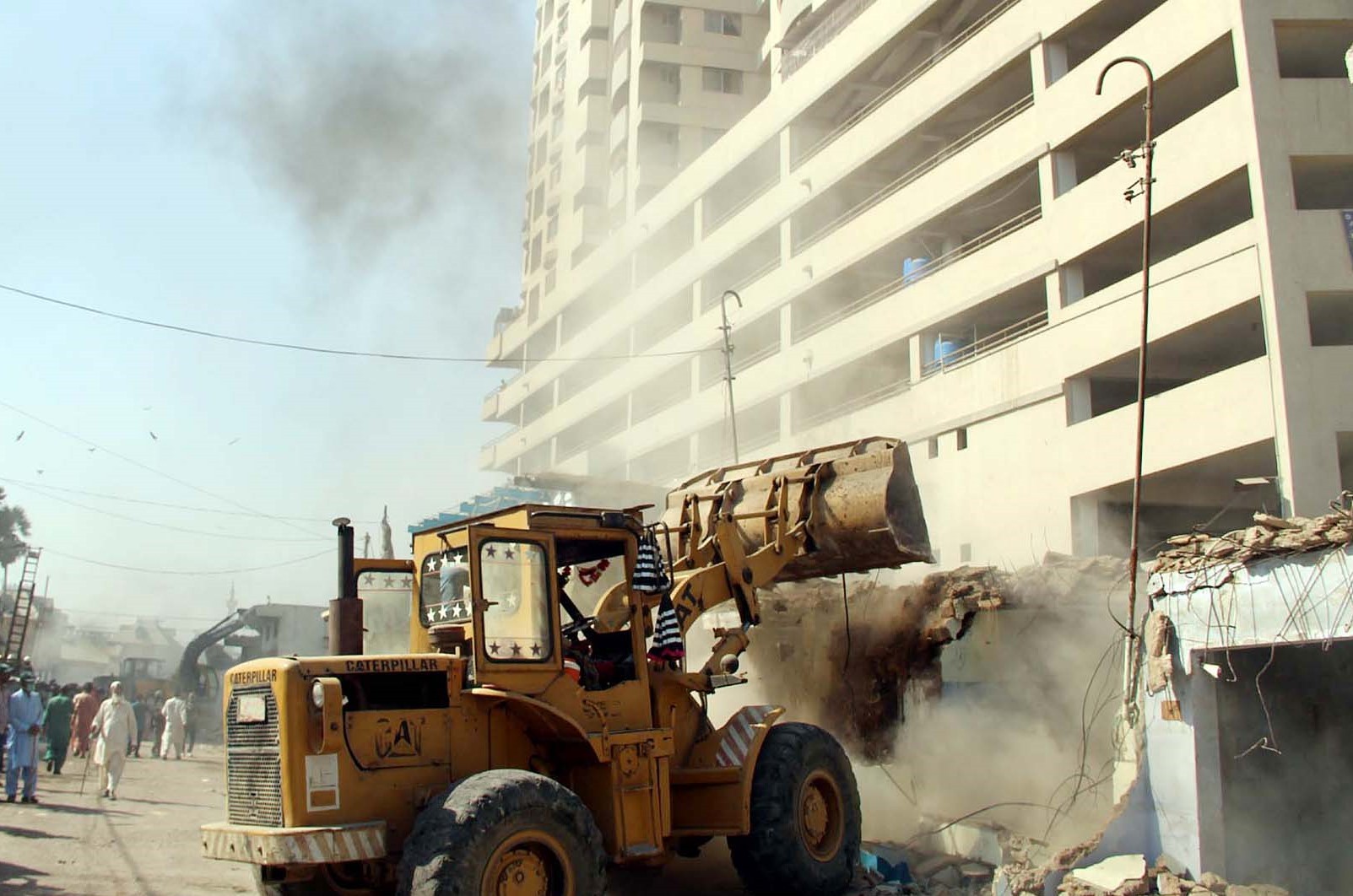
Attempts to undo the wrongs done in Karachi’s urban development

The Supreme Court’s order of January 24 and other directives in relation to Karachi’s planning, development control and land management shall have far reaching effects. The court directed the Sindh Building Control Authority (SBCA) and other concerned departments to demolish all illegal construction and revert the land uses to originally allocated provisions as per city master plan prepared forty years ago.
The SBCA is also barred from issuing ‘no objection certificate’ to commercial buildings without obtaining green signal from Sindh Environmental Protection Agency. Marriage halls and banquet spaces along many thorough fares of the city are also ordered to be removed. Conversion of residential or amenity plots for any other purpose was also strictly prohibited.
In another case related to the possible legalisation of land granted to a super developer by Malir Development Authority, the court refused to accept the offer of Rs358 billion considering it lesser than the actual value of exchanged land. The implementation bench of the court is in the process of enforcing the May 4, 2018 judgement that had declared the land transaction to the developer illegal.
These interventions are generally useful as they attempt to undo the wrongs that have been done in Karachi’s urban development. High density, high rise development is swiftly devouring the low rise bungalows and other forms of property. One observes that serene neighbourhoods of North Nazimabad, PECHS and Federal B Area becoming infested with ugly looking match box like apartment/mix use blocks. However, if the honourable Supreme Court puts the urban planning process on the right path by directing the concerned local, provincial and federal agencies, it may improve urban development in a rational manner.
Essentially the process of development control evolves from master planning exercises. The existence of a legally valid, up-to-date and technically sound city plan is a pre-requisite for enacting an appropriate development control mechanism. According to the standard process of planning, the city plan is prepared, updated or modified by the professional planners of the concerned planning agency. After a solution is reached, it is placed in public places for display in a bid to invite objections, comments or suggestions for improvement. Individuals and interest groups extend their feedback. This happens in various cycles. Upon completion of this process, the city plan and its various guidelines are finalised.
The society owns this process and its outcome due to the very fact that it considers itself to be a participant in its creation. The development control is prescribed by the same authority or its affiliates. Whenever and wherever any violation is detected, it is accordingly dealt with.
This common sense practice has remained absolutely absent from our working norms. Many city plans were developed by various agencies since 1950s. However, none of the plans were notified for making them legally binding. The task of development control became all the more confounded in the final analysis.
The tasks of regulating urban development are exercised by several institutions at present. About a dozen agencies in Karachi that own and manage lands claim to hold that prerogative. Conflicting laws and provisions add to this confusion.
For instance, Sindh Building Control Authority which was created under the proviso of Sindh Building Control Ordinance 1979 is able to manage areas under municipal and provincial jurisdiction. One of its clauses provided for an oversee committee to supervise the work from an objective perspective. It was seldom created. Federally controlled and constituted bodies such as Cantonment Boards have their own prerogative which stands unaffected from the prescriptions of city local authorities. One authority discourages tall buildings for some time, the other issues permits to develop them unabated. In the same neighbourhood, different types of building profiles are found which create anomalies in real estate development, management and transactions. Gulistan-e-Jauhar, Saddar and Clifton are few locations that reflect this grave malpractice to a considerable extent.
Land supply and management of built properties of various public agencies are in disarray with no stock taking done for a sizable period of time. For instance, the land assets of Railways are rampantly depleting due to encroachments which continues unabated. Some years ago, a housing scheme for officers was developed at a land that was marked for the expansion of cricket stadium in Karachi. Certain interest groups are normally considered above the law and their exigencies are never regulated. The rampant construction of seminaries on graveyards and parklands in the city are examples.
The process of obtaining building permits is also an affair marred by dubious practices. Common perception remains that if one greases the palm of the concerned staff at the right end, the file will run on rails without any objection!
Development control requires adequate professional capability at various levels. The capable human resource for this vital job is almost impossible to acquire. Honest and hard working professionals prefer to work in the private sector. They believe that in such agencies, favouritism and nepotism reign supreme. Whenever the building control functions will be organised at the town or union level, it shall be exceedingly difficult to motivate genuinely competent and qualified personnel to join these institutions for public service. The reporting mechanism is also non-existing in terms of land and development control. Despite enhancement in technology such as satellite photography/imagery or Geographic Information System (GIS), no annual report/study on the status of land use change, encroachments, densification or infrastructural situations exists.
It shall require a voluntary act from the federal and provincial governments to bolster the local authorities. SLGO 2013 must be amended to make room for Karachi Planning Agency that should be sufficiently empowered to prescribe development plans, enforcement mechanism and growth patterns through a consultative process.